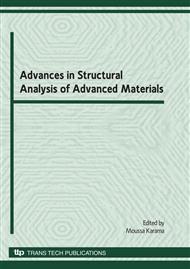p.93
p.103
p.113
p.129
p.141
p.149
p.159
p.171
p.179
An On-Line ANN-Based Approach for Quality Estimation in Resistance Spot Welding
Abstract:
The aim of this study is to develop an effective on-line ANN-based approach for quality estimation in resistance spot welding. The proposed approach examines the welding parameters and conditions known to have an influence on weld quality, and builds a quality estimation model step by step. The modeling procedure begins by establishing relationships between welding parameters (welding time, welding current, electrode force and sheet metal thickness), welding conditions represented by typical characteristics of the dynamic resistance curve and welding quality indices (nugget diameter, nugget penetration, and indentation depth), and the sensitivity of these elements to the variation of the process conditions. Using these results and various statistical tools, three estimation models are developed. The first one is based exclusively on welding parameters. The second model is based on characteristics of the dynamic resistance curve. The third estimation model combines welding parameters and characteristics of dynamic resistance curves. In order to carry out the models building procedure, an extensive number of welding experiments are required. For this purpose, Taguchi’s efficient method of experimental planning is adopted. The results demonstrate that the developed models can provide an accurate on-line estimate of the weld quality, under different welding conditions.
Info:
Periodical:
Pages:
141-148
Citation:
Online since:
May 2010
Authors:
Price:
Сopyright:
© 2010 Trans Tech Publications Ltd. All Rights Reserved
Share:
Citation:


